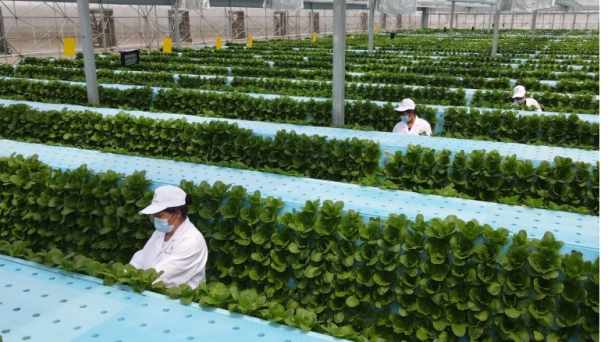December 22, 2024 | 17:25 GMT +7
December 22, 2024 | 17:25 GMT +7
Hotline: 0913.378.918
December 22, 2024 | 17:25 GMT +7
Hotline: 0913.378.918

Agrivoltaics harmonizes renewable energy with agriculture, boosting land productivity, reducing emissions, and supporting rural economies. Photo: CC BY-SA 4.0.
The rapid growth of photovoltaic (PV) energy production in recent decades reflects the urgent need for sustainable development and the advancements in solar technology.
By 2020, global PV power reached 760 GW, with China, Europe, and the United States leading the way. This expansion, however, has sparked debate over land use, as nearly all PV power plants are ground-mounted.
These installations often occupy agricultural lands, raising concerns about environmental damage, threats to biodiversity, and socioeconomic risks, such as reduced agricultural output and rural depopulation.
Agrivoltaics, the practice of combining solar energy generation with agriculture on the same land, has emerged as a potential solution. The concept dates back to 1982 when researchers designed PV systems allowing sunlight to reach crops underneath.
By 2011, studies revealed agrivoltaics could boost land productivity by 35% to 73%. Since then, numerous experiments have confirmed its benefits for energy production, food security, and rural economies.
This dual-use approach alleviates the competition between renewable energy and agriculture, addressing both food supply concerns and climate change. Research indicates that agrivoltaic systems can reduce greenhouse gas emissions, support rural livelihoods, and enhance crop yields.
For instance, shade-tolerant crops, such as lettuce and wheat, thrive under these systems. Additionally, the shading reduces soil temperatures and water requirements, particularly in arid regions. By lowering panel temperatures through evapotranspiration, these systems also improve PV efficiency.
The flexibility of agrivoltaic designs allows them to suit diverse landscapes. Some systems are purpose-built, with panels elevated and spaced to maximize solar and agricultural efficiency. Others retrofit existing PV farms by introducing compatible crops.
thebrighterside

(VAN) China has reduced fertiliser use for eight consecutive years since 2015 and yet the country's agricultural output has steadily increased with 2024 grain production hitting a historic high.

(VAN) Equatic is among a wave of start-ups exploring how the ocean could be harnessed to capture and store carbon. But not everyone is sure it's such a good idea.

(VAN) An Giang has over 300,000 farmers directly engaged in rice production and 229 cooperatives playing a pivotal role in the implementation of the One Million Hectares of High-Quality Rice Project.
/2024/12/18/1550-3-080744_656.jpg)
(VAN) C.P. Vietnam continues to accompany Dong Thap province to build green embankments to protect land and prevent landslides on river banks in 12 districts and cities.

(VAN) The Quang Tri Department of Agriculture and Rural Development collaborates to pilot the Greenhouse Gas Emission Reduction Project in agriculture.

(VAN) Positive results in mass vaccination against African swine fever in Vietnam will become important evaluation bases for other countries.